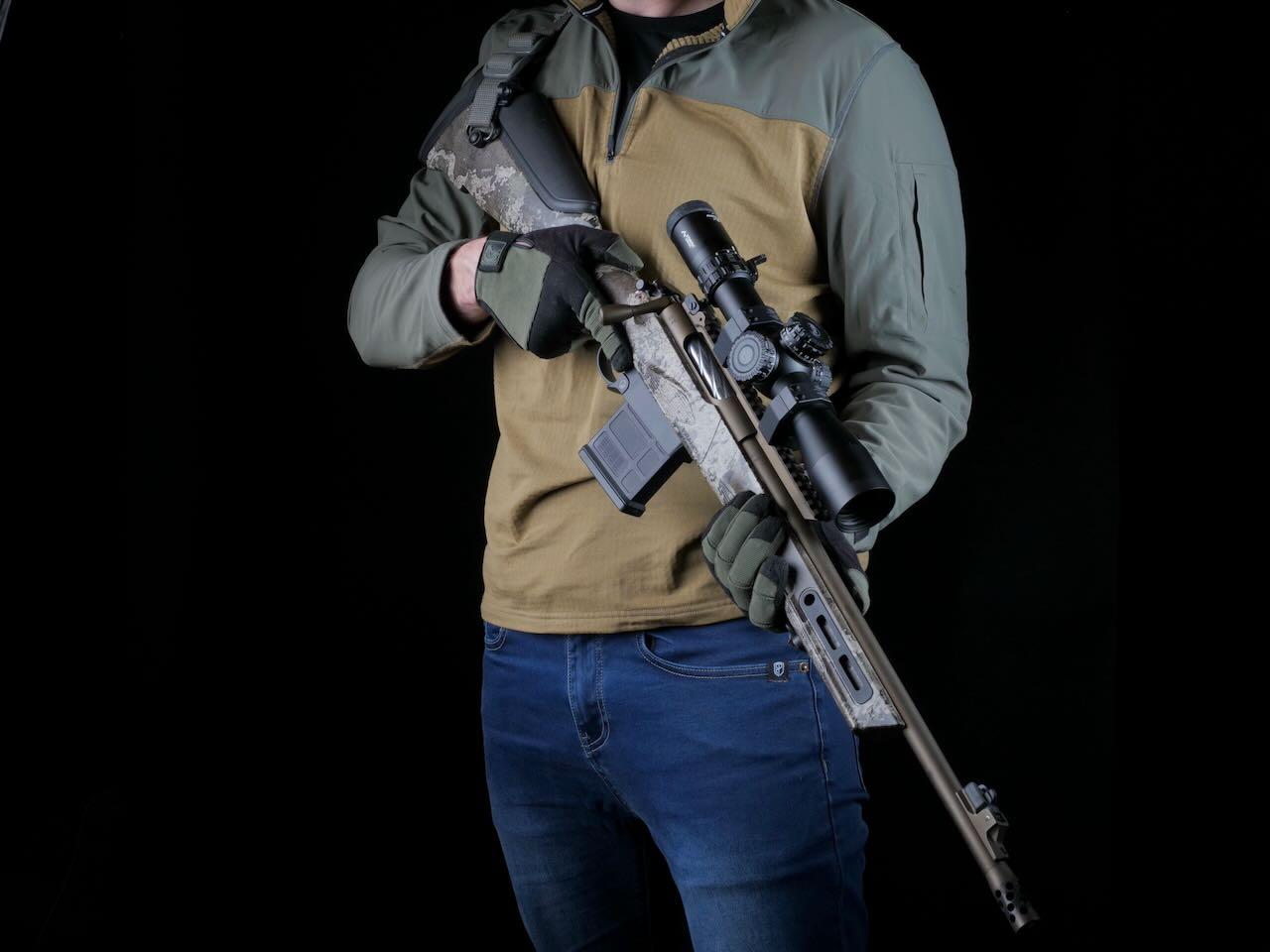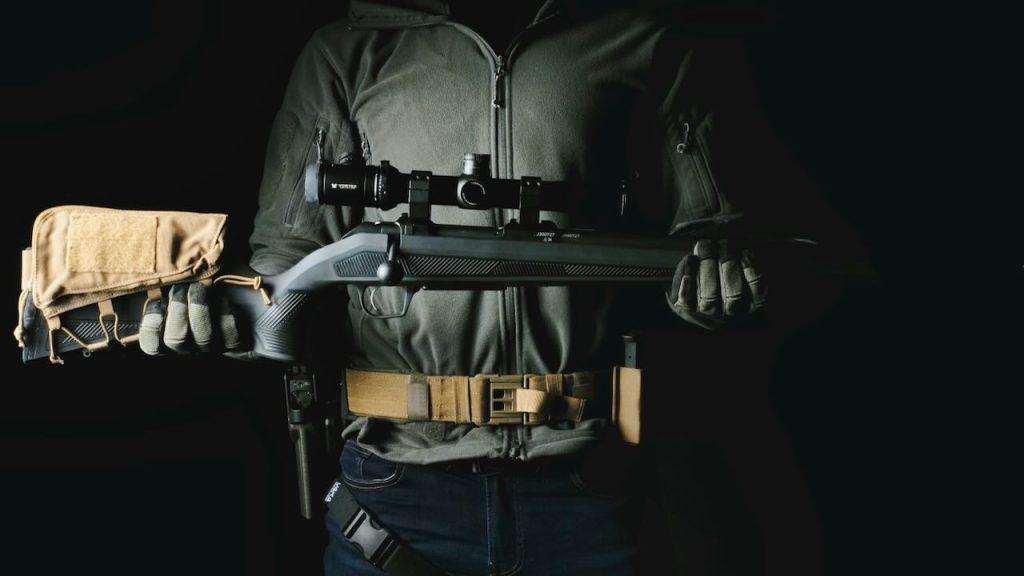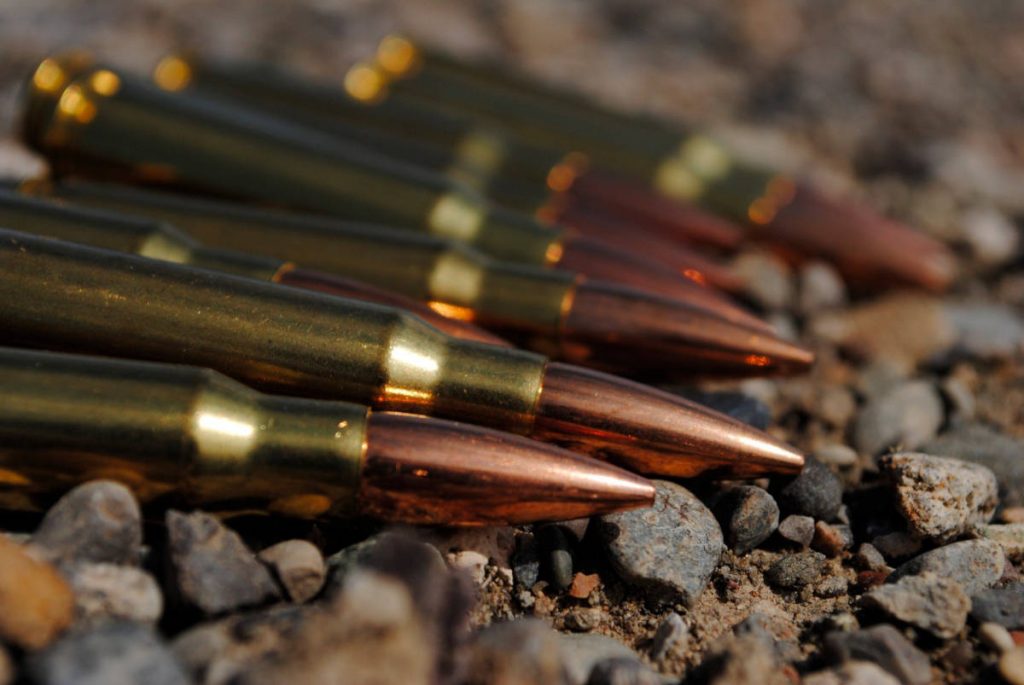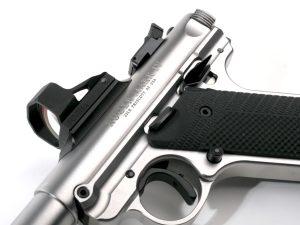This article contains affiliate links.
In the September 2025 issue of American Rifleman, Brian Sheetz (the Editor in Chief) has a six-page article discussing the idea of a General Purpose Rifle. Brian goes through the relevant history of the idea, drawing from the storied scout rifle format posited by Jeff Cooper and on to modern issued versions like the Canadian C19. Of course, there’s the nod to the scout format rifles produced by Steyr, Ruger, and Savage. Brian also acknowledges the usefulness of modern semiautomatic rifles like the AR-15, or Springfield’s M1A format.
I have personally reviewed several rifles for American Rifleman that could fit into this niche, including the Franchi Momentum All-Terrain Elite, Taurus Expedition, Tikka T3x Superlite, CZ 600 Alpha (review not posted yet), Sako S20, and others like my own Howa 1500.
Brian is a wealth of information on the history of how the market evolves over time. He knows pretty much everybody, and has access to a vast library of material to draw from. I remember sitting down at lunch with him and he mentioned my article about terminal ballistics, and talked about when he had similar conversations with Dr. Martin Fackler himself. So when Brian is bearing down to illustrate a concept, I think it’s worth listening to.

The American Rifleman General Purpose Rifle
Let’s start with the main idea. The General Purpose Rifle (GPR) is a manifestation of “only one long gun.” If you were to strip everything down and say that a marksman could have only one rifle to serve all possible purposes from self defense to hunting and Scenario-X, what would such a rifle look like? The classic Jeff Cooper specifications of 1 meter in length and no more than 3 kilograms (a bit under 7 lbs) in weight are a fair starting point.
The main goal is a rifle that’s easy to carry and live with, easy to mount and shoot, and carries enough “punch” to do rifle things.
How you specifically get there is a bit up to you.
And such is the point of the GPR: regardless of its specific attributes, it should result in a familiar and trusted tool that can be employed with ease by it’s user. We each need to determine which specific setup is best for our own requirements. But it bears nothing that our trek together towards the GPR designation, no matter how fraught with argument, appears to ‘double back” across the tracks made by Col. Cooper more than 40 years ago. And the trail forward will no doubt continue to take us through fresh terrain as it accounts for an expansion of acceptable “general purpose” parameters.
Brian Sheetz, American Rifleman September 2025
Other Iterations
This is not my first rodeo down this thought experiment. Aside from the Scout Rifle concept and now the General Purpose Rifle, other writers have wrestled with this idea, too. Years ago, Guntweaks.com published a lengthy treatise on something they dubbed the Ranger Carbine. The idea is very similar, with a bit more of a lean towards “fudd profile” self defense in an emergency while retaining good hunting characteristics. My friend Sunshine_Shooter from the Pro-Gun Millennial published a review of that particular line of thinking a while ago, too.
In another direction, you have something like the “Practical Rifle” concept that instructors like Randy Cain advocated for and taught. Randy, of Cumberland Tactics, was a rangemaster and instructor at Gunsite for eight years. He knew Col. Cooper personally, and evolved the concept of the Scout Rifle into the Practical Rifle after years of trial and error. I interviewed Randy a while ago on the concept, as well, and that further shaped the opinion I’m going to share with you in a minute.
All of this to say that there are many converging lines of thought on the topic.

The Everyday Marksman General Purpose Rifle
Let’s dig into my personal definition of what a GPR should be. After all, it would be easy to say that a modern GPR is an AR-15 chambered in something with a little more oomph for hunting, like a 6.5 Grendel.
As I’m fond of saying, there is no such thing as “optimal” in the real world. You can only ever optimize something to a specific set of tasks and conditions. It’s easy for people to imagine a specific set of rules and boundaries and then build towards that. However, reality is often messy and unpredictable, and optimizing too far in one way means necessarily reducing performance in another.
Writ large, here are my boundaries for a vague concept of a General Purpose Rifle:
- Must be legal in all 50 states
- Chambered in a cartridge suitable for self defense and hunting throughout North America
- Ammunition must be relatively common and easy to find in any sporting store
- Accurate to our 10″ circle at 300 yards standard (approximately 3.1 MOA)
- Weigh no more than 9 lbs loaded
- Reliable feeding and extraction
In addition, here are some “nice to have” criteria.
- Can be fed from the top with the action open (note: not just single loading, but actually pushing rounds into the magazine)
- Detachable magazine
- Controlled round feeding
- Accessory mounting points
- Threaded barrel

First Pass of Options
Most of this criteria shouldn’t be a surprise, and many rifles on the market can hit most of it. The trickiest part is actually the 50-state legal component. Something like a Springfield M1A Squad Scout actually meets this point while still remaining a semi-automatic rifle, so it’s a worthy contender.
For simplicity, though, I’m going to rule out semi-automatic rifles because of the unstable political and legal landscape. Things that were legal five years ago are not legal today in some states, and there always seems to be pressure to tighten the ratchet in the anti-gun strongholds. So until we have concrete legal precedent that these states cannot ban semi-automatic rifles, it’s legally safer to err towards manual operation like bolt actions, straight pulls, and lever actions.
Cartridge Selection
For cartridge choice, the need for hunting throughout North America more or less necessitates a full power rifle cartridge. Sure, you could get by with something like 7.62×39, 6.5 Grendel, or 6mm ARC for small to medium sized deer, but if you find yourself out west and needing to take an Elk, then you’re going to need something a more oomph behind it.
This rules out a lot of the ranch rifle designs that I think make a lot of sense for something like the Ranger Carbine. The requirement to be able to find ammunition in most any sporting store further constrains selection down to something like 6.5 CM, .308 Win, or 30-06 Springfield.
Weight
The weight requirement means a barrel that’s probably in the 16″ to 18″ range with a medium to light profile. The weight and balance of the rifle matter a lot, here, because you need to be able to carry it a lot and mount it for quick shooting.
A heavy rifle sucks for carrying over long periods. On the other side, a super light rifle also gets uncomfortable to shoot for extended periods because it does little for the recoil of a full power cartridge. That matters for defensive purposes and repeated shots.
Something in the 7 to 9 lb range hits this balancing point. Of course, you need to be careful about added weight from an optic, so you should aim for the lower end of that range. As an example, the Springfield M1A Squad Scout I mentioned earlier tips the scales at 8.5 lbs by itself before any optics or ammunition, so that’s pushing it.

Loading and Feeding
On my “nice to haves,” I want to call out feeding from the top. In most cases, you either get a blind mag that you always stuff rounds in from the top or you get a detachable magazine system. Not both.
Most detachable magazines for bolt action rifles must be removed from the rifle before you can load them. The design is such that you need to press the round down and slide it in like a pistol magazine.
I like the option to stuff rounds into the magazine from the top because it’s logistically simpler. When I talked to Randy Cain, he talked about this like shotguns: if you aren’t shooting, you should be consciously thinking about stuffing more ammunition into the gun. If you physically can’t do that, then you’re at a disadvantage. This is actually one of the reasons he advocated for not using detachable magazines.
Personally, I find carrying extra magazines to be a convenience you can’t ignore. If you run dry, it’s faster to slap another 10+ round magazine into the gun and continue than it is to try and stuff 10 rounds in from the top (unless you’ve got something that takes stripper clips). But if you have a lull, it’s certainly convenient to top off 3-4 rounds without removing the mag.
Lastly, the component of controlled feed comes from many long-time writers explaining its benefits especially in dangerous game hunting. Controlled round feeding is an extra layer of security for high stress situations where you may not always cleanly run the bolt back and forth.
My Top Picks for Base Guns
With that criteria stated, these are the guns that I think make the first cut.
- Beretta BRX1 Ranch: Straight pull design, .308 Win, 6-7 lbs (depending on either 16″ or 18″ barrel), feed from the top, and can be swapped to accept 308 AR PMAGs
- CZ 600+ Alpha: Controlled feed, double stack magazine can be fed from the top, 7.1 lbs due to aluminum receiver. I spent time with the original CZ 600 Alpha in .308 Win, and was impressed with it enough that the new generation 600+ legitimately excites me since it was recently announced
- Ruger Hawkeye Series: I particularly like the Compact in .308 Win or the Guide Gun in 30-06. Controlled round feed, blind box magazine that you feed from the top
- Tikka T3X CTR: Just an all-around good rifle with lots of room for upgrades, the 16″ T3x Roughtech Ranch stands out to me in particular as a good option
- Ruger American Ranch: You can get it in .308 (and others), and has most of the same traits as the scout plus a standard position optic mount
- Ruger Scout Rifle: More or less designed to match the original concept, it does it well- though I don’t care for the forward mounted optic format
- Mossberg MVP Patrol: Feeds from 308 AR PMAGs (or M1A/M14 mags), compact size and weight
I’m sure there are some that I’ve missed, but these are a good starting point for the next part.
General Purpose Rifle Optics Selection
When I talked to Randy Cain about his vision of “Practical Rifles,” he insisted that the best choice was an LPVO in 1-4x, 1-6x, or maybe 1-8x range. That makes a lot of sense for “all around” use, but I think the market is drifting a little bit away from that. In this case, for a rifle that I might have to use for a variety of circumstances, I actually think a medium power variable optic (MPVO) with 2-3x on the low end and 10-15x on the high end makes the most sense, especially when you pair it with an offset mini dot.
Back when I talked to Jeff Gurwitch on the topic, we had a good discussion on the role of the LPVO in a world where you pair it with mini dots. The LPVO really came about in a world before we had reliable mini dots like the the RMR and everything that’s come after.
The intent of the LPVO was to give the user an option of zooming up to magnification, or zooming back down for close-in engagements all with one optic. However, in an era where most shooters pair the LPVO with the dot, they tend to leave the LPVO at the higher end of magnification and immediately switch to the dot for close-in work.
That discussion led me to say that I think we’ll see a split in the market. On one path, shooters opt to save weight and switch back to prism sights paired with mini dots (this is the route I’ve gone). One the other side, shooters started moving to MPVOs that offer more magnification for the weight given and rely on the mini dot for close-in work.
From my perspective, a GPR is best suited by going the MPVO with mini dot route. Given the emphasis on speed, a second focal plane optic is a reasonable choice here, and most shooting would be done with the optic zoomed down to the lower or mid level range. The option to go to higher magnification enhances observation and target identification.
MPVO Suggestions
Here are some optics that I think make sense for the GPR. I’m trying to balance magnification range with weight, as well, since we still want to keep it under our 9 lb limit. I also want illumination given the varying light conditions we may need the rifle.
- Trijicon Accupoint 2.5-12×42: Fiber optic illumination, mil dot, but otherwise pretty basic
- Trjicon Credo 2-10×36: Compact scope, nice tree reticle
- Steiner H6xi 2-12×42: Meaty optic build for tough hunting use,
- Steiner Predator 4 2.5-10×42: A bit more budget friendly than the H6xi, but still good optics
- Vortex Viper PST Gen II 3-15×44: Great all-around medium range scope
- Athlon Helos BTR Gen II 2-12×42: More budget-friendly choice in this segment
- Element Optics Helix HD Compact 2-12×42: Another budget-friendly choice
There are many optics that would work here, so consider these just some selections that I think represent a solid list of features and price points.
Mini Dot Suggestions
I don’t need to spend a lot of time here, as the same optics that would pop up for pistols work here. Whether you want open or closed emitter is up to you. For easy of mounting options, I would probably pick something based on the RMR or the ACRO footprint, and then some way to mount it at a 45 degree angle to the optic. This might require a longer rail or some other creative solution like mounting it to the side of the scope body itself.
What Else?
Of course, the main question is the base rifle and the optic system. Figuring you’ve included a good system for mounting the optics, what else goes into it?
Two things come to mind. First, you need a good sling. You could go with a classic shooter sling with an arm loop, and some variation of that would probably be my preference. But a a more modern two-point tactical sling works just as well.
I also think some kind of stock pack is a useful addition, presuming the rifle supports it. It’s a useful way to ensure consistent comfortable cheek weld and also gives you a place to store some loose ammo and other tools specific to the rifle. I like to keep range cards, dope charts, and other small items in mine.
I didn’t mention lights or anything, and I wouldn’t consider it in this case. Why is that? Well, a weapon light implies a lot of things, particularly low light fighting in close enough space that the light would be useful. Frankly, I think that’s a bad deal for the general purpose rifle.

To that end, there’s another major component here.
The Secondary Weapon
By my estimation, the general purpose rifle is really designed to function well between 50 and 300+ yards. If I was carrying one, I would plan to do a whole lot more observation and avoiding fights than shooting. You could certainly use it to get out of sticky situations, if needed, but the first line of defense is always to not be where there’s a problem to begin with.
But what if you’re at those very close distances? This is where a handgun comes into play. If you’re going to carry a GPR, then I think a quality sidearm you shoot well is an absolute necessity. If you’re at distances close enough to need a weapon light, then I’d just go ahead and pull out the sidearm (wither with a light on it, or with a handheld light).
I’ve said it before, but if you’re planning around difficult times and things like Scenario-X, then you really should consider your handgun to be your primary weapon and train accordingly. It’s the thing you’re far more likely to reach for, and proficiency with it is not optional.
Another Approach: The General Purpose Shotgun
I’ll close this one with one side thought. The idea of this article focused on a general purpose rifle. But if we’re looking for a firearm that is equally useful for self defense as it is for hunting and other activities, don’t rule out the shotgun. Sure, its utility diminishes a lot beyond 100 yards and it definitely wouldn’t meet our idea of 10″ at 300 yards, but for most situations it would still be a fantastic option.
But perhaps that’s another topic for a different day.
Over to You
So there’s my thoughts on the topic. How would you approach a General Purpose Rifle for yourself?







I don’t want to ever get in a gunfight. If I have no choice in the matter I want the best gun I can have for that job. That’s probably an AR. And friends with more of them A GPR is not that gun. It is the one that does a better job at all the more likely things you might actually use a gun for. It is powerful enough and handy enough and supportable enough. Its specialization is practicality. Cooper spent his life with a gun in his hands and having spent some time with scout rifles, I am more and more impressed with his conclusions, the more I use them. I have come to prefer an LPVO on mine, not an option at the time he conceived it, but have a rifle set up with a scout scope too. and it is actually very useful. I have an M1A scout and a lot of time with a Ruger Gunsite scout as well. I messed around with a 16 in Sig Cross, and a 16 in Grendel. I built out a Tikka T3 compact in .308 when they closed them out for the T3X. It has to be the best bang for the buck in my safe. There should probably be a discussion about a lever gun in .30-30 here as well. Mine is a 16 in trapper with williams perp sights that are much more useful than the buckhorn rear from the factory. It has always been practically… Read more »
The Fix in 308Win, 6.5CM or 8.6BLK is the modern general purpose bolt gun. I have one of each. My 6.5 is set up as a competition rifle, but both the 308 and the 8.6BLK are sub 10lbs with a suppressor, bipod and optic.
Great article. Thank you for writing and publishing it to prompt discussion and consideration of this subject. First, although the new CZ 600+ Alpha looks like a great platform in 308, it has a 14 inch length of pull which for most people including me is far too long. It doesn’t appear to be adjustable or have the room to remove one inch to get a more reasonable LOP. Two, CZ is in Europe. Parts are difficult to obtain for many of their pistols let alone the Bren platform of guns. This is the third or fourth iteration of their bolt action platform–how long will parts be made, let alone available. Will this model be superseded in 3 or 4 years by another one? Three, putting a massive scope (some that you recommend) on a rifle can ruin its balance, feel and handiness. A 1X4 or 1X5 seems more than sufficient. Four, although I am not wedded to this, is whether anything other than 308 is really necessary. As a very committed believer in the Scout Rifle concept (have two) and Gunsite 270 graduate, I am sensitive to Cooper’s thoughts on 308 but times have changed. Now, in my state 5.56, is allowed for all mammals but elk, bighorns and mt goat (.24 or larger) which wasn’t the case 20 years ago. On the other hand, I personally do not hunt with a GPR but prefer to use a fairly traditionally configured bolt rifle with a 1X4. However, for an overall GPR I might argue… Read more »
I’ve gone with a highly customized (thanks Accuracy Systems) Ruger mini-14 ranch in 5.56 with an illuminated 3×12. It’s innocuous enough in non permissive environments yer takes 30 & 49 round mags. Ammo is plentiful, with various weights. I used 77gr HPBT for precision work yet 55gr for pretty much everything else.
Agree with the caliber selection. The .308 is one of the most accurate cartridges ever developed, practical out to mid-range distances and readily available. If self-defense/ gun fight is a lesser concern, I agree with the bolt selection. About any bolt rifle will fit the need. In my experience a scope at 1×4.5 is all that is needed. There are several manufacturers that have quality scopes in this magnification range. The scope is one area I wouldn’t skimp on. Also, make sure you can easily pick up (see) the center of the reticle; whether it’s a crosshair or dot/duplex configuration. If self-defense is the first concern, a semi would be my choice. A standard M1A would be my first pick as opposed to the scout or shorter barrel versions. You’ll notice a big difference in muzzle jump when compared to a standard M1A configuration. The area I would caution on with the M1a is reliability. As good as these rifles are, at some point they will need servicing. In which parts and a knowledgeable M1A armorer will be difficult to find. After making that last statement, the M1A with a 1×4.5 scope is my first choice. A pump shotgun is also a great choice. The downside is range. Although, rifled slugs can be quite accurate out to 150yds. One other rifle I would give great consideration to is an issue 03A3. Built for war, accurate, reliable, 30-06 ammo is still all over the place, including about every American household. Just… Read more »